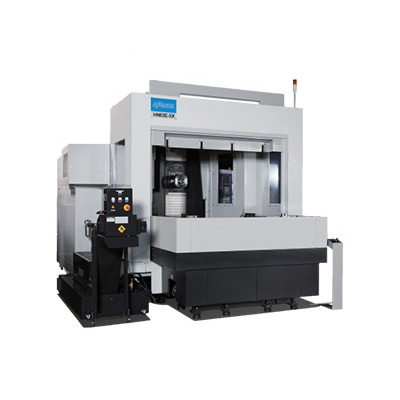40mm Waste Pipe Connector for Efficient Plumbing Solutions and Easy Installation
Understanding 40mm Waste Pipe Couplers A Comprehensive Guide
Waste pipe systems are crucial in ensuring the effective disposal of wastewater in both residential and commercial settings. Among the various components that make up these systems, couplers play an essential role in connecting different sections of pipes, enabling a seamless flow of wastewater. In this article, we will delve into the specifics of 40mm waste pipe couplers, discussing their importance, types, materials, installation methods, and maintenance.
What is a 40mm Waste Pipe Coupler?
A 40mm waste pipe coupler is a fitting used to join two sections of 40mm diameter waste pipes. These couplers are essential in various plumbing applications, particularly in drainage systems, as they help to extend or redirect the flow of wastewater. The 40mm size is standard for domestic waste installations, making these couplers widely used in homes, offices, and industrial facilities alike.
Importance of 40mm Waste Pipe Couplers
The primary function of waste pipe couplers is to ensure a secure and leak-free connection between pipe sections. This is crucial because leaks can lead to significant plumbing issues, including water damage, mold growth, and even structural problems within a building. By providing a reliable connection, 40mm waste pipe couplers help maintain the integrity of the plumbing system, protecting property and ensuring a safe environment.
Types of 40mm Waste Pipe Couplers
There are several types of 40mm waste pipe couplers available, each designed for specific applications
1. Straight Couplers These are the most common type of coupler, allowing two pipes to be joined in a straight line. They are typically used for extending existing pipe lengths or connecting sections of pipe.
2. Elbow Couplers These couplers are designed to connect pipes at an angle, usually at 90 or 45 degrees. Elbow couplers are essential for redirecting the flow of wastewater around obstacles or to adjust the path of plumbing installations.
3. Reducer Couplers These fittings allow for a transition between different pipe diameters. If a plumbing system involves varying pipe sizes, a reducer coupler is used to connect a 40mm pipe to a smaller or larger diameter pipe.
4. Joint Couplers These couplers accommodate pipes that may be misaligned or at slight angles. They offer some flexibility in installation, making them a convenient choice for tricky plumbing configurations.
Materials Used in 40mm Waste Pipe Couplers
The materials used in manufacturing 40mm waste pipe couplers greatly influence their durability and effectiveness. Common materials include
- PVC (Polyvinyl Chloride) This is one of the most popular materials for waste pipe systems due to its resistance to corrosion, ease of installation, and affordability. PVC couplers are lightweight and non-toxic, making them suitable for residential and commercial use.
- Polypropylene Known for its superior strength and chemical resistance, polypropylene couplers are often used in environments where harsh chemicals may be present. They are less common than PVC but are effective in specific applications.
40mm waste pipe coupler

- Rubber In some cases, rubber couplers may be used to accommodate flexibility and movement in the plumbing system. They provide a good seal between pipe sections, reducing the risk of leaks.
Installation of 40mm Waste Pipe Couplers
Installing a 40mm waste pipe coupler typically involves the following steps
1. Cut the Pipes Ensure the ends of the pipes are clean and straight. A pipe cutter can achieve this clean cut. 2. Deburr the Edges Remove any burrs or sharp edges from the cut ends to prevent damage during installation.
3. Lubricate (if necessary) For PVC or other specific materials, it might be necessary to apply a lubricant or cement according to the manufacturer's instructions.
4. Join the Pipes Align the ends of the pipes with the coupler and push them together firmly.
5. Secure the Connection Ensure all joints are tightly sealed, and if applicable, use hose clips or clamps for added security.
6. Test for Leaks Once installed, run water through the system to check for leaks at the coupler connections.
Maintenance Tips
Regular maintenance of waste pipe systems can prolong the life of couplers and prevent costly repairs
- Inspect Regularly Check for signs of wear or damage, especially in areas with frequent use.
- Clear Blockages Ensure that there are no blockages in the pipes that could put pressure on couplers.
- Replace Damaged Parts If any coupler shows signs of deterioration, replace it promptly to avoid leaks.
Conclusion
Understanding the role and functionality of 40mm waste pipe couplers is essential for anyone involved in plumbing or property maintenance. By selecting the appropriate type and material, following proper installation techniques, and conducting regular maintenance, you can ensure the longevity and efficiency of your plumbing system. These small yet vital components contribute significantly to the overall performance of waste management systems, making them an indispensable part of modern plumbing.
-
Ultimate Spiral Protection for Hoses & CablesNewsJun.26,2025
-
The Ultimate Quick-Connect Solutions for Every NeedNewsJun.26,2025
-
SAE J1401 Brake Hose: Reliable Choice for Safe BrakingNewsJun.26,2025
-
Reliable J2064 A/C Hoses for Real-World Cooling NeedsNewsJun.26,2025
-
Heavy-Duty Sewer Jetting Hoses Built to LastNewsJun.26,2025
-
Fix Power Steering Tube Leaks Fast – Durable & Affordable SolutionNewsJun.26,2025

